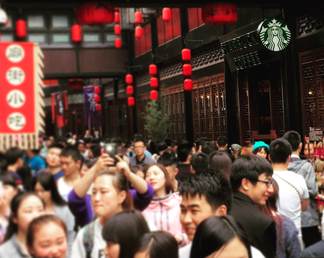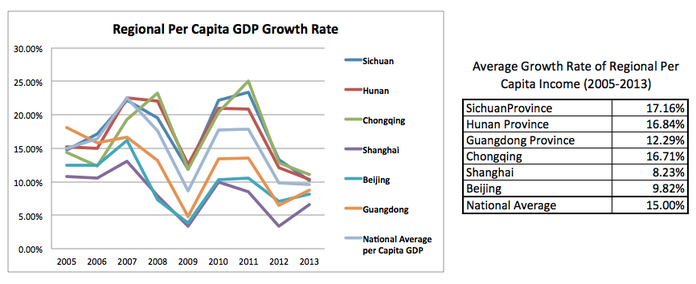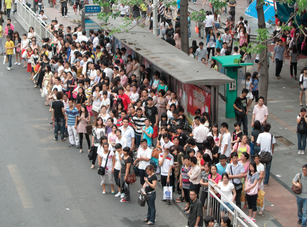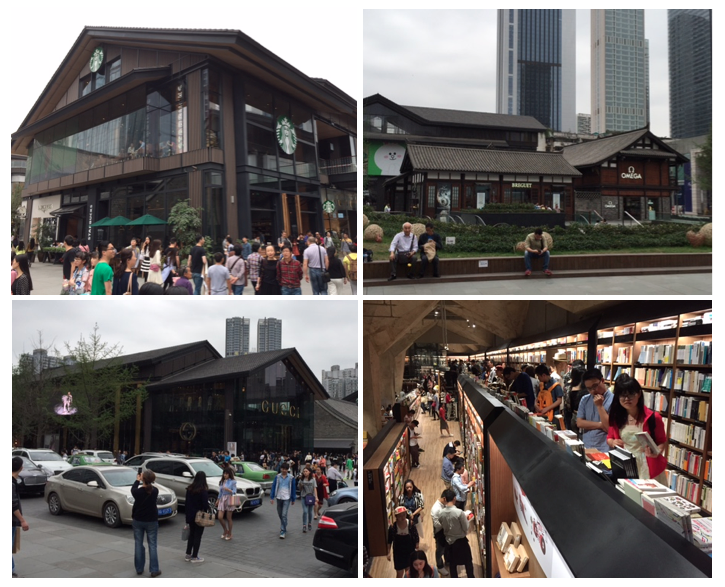Apple and Starbucks in Chengdu, China: Fast Growing Largest Inland Economy (1)
May 6, 2015
Akira Kondo
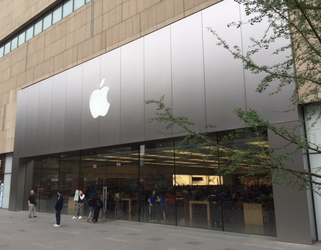 Apple Store MixC Chengdu Apple Store MixC Chengdu
Apple Store in Chengdu
When I visited Chengdu in the earlier April, there was only one Apple Store available in the city. The store is not really located on a tourist place, like Tianfu Square and Chunxi Road, rather located on a residential and business district of the city. As a tourist, it is no reason to stop by this Apple Store unless your iPhone is in trouble. However, the store is nicely located in a relatively high-end shopping mall, where most internationally well-known retail stores settle down and so do a Starbucks store. Unlike Shanghai as always, iPhone users in Chengdu seemed lesser or even harder for me to find new gold-colored iPhone 6 Plus during the trip while I still could find them easily in neighboring Chongqing a few days earlier. It is maybe understandable if we just look at per capita GDP numbers between those cities. Per capita GDP in Sichuan province is 32,000RMB, about 32 percent less than neighboring Chongqing. Sichuan people also like to eat Xiaochi, small snacks, what neighboring Chongqing people always grab. However, it does not mean Chengdu people just like eating Xiaochi while ignoring modernity, such as attaining iPhone or sipping Starbucks coffee. It is very likely that once the new Apple Store opens, more and more middle-income consumers will flock to the store to experience its modern products. Unfortunately, most consumers in Sichuan province today are trapped in the middle-income category, which makes harder for them to attain an expensive iPhone. However, tens of thousands of those consumers are getting out of the middle-income trap every year thanks to the faster-than-average per capita growth in the region. Those people are certainly going to become soon-to-be Apple’s customers within next couple of years while today’s wealthier people already enjoy Apple’s modern products.
Sichuan consumers tend to own relatively cheaper smartphones from Xiaomi, HTC, or Samsung at this moment, but probably until they reach upper middle-income category in coming years. In most Chinese cities, including Chengdu, there are always hundreds of local smartphone shops on off-streets to sell reasonable non-Apple smartphones to millions of middle-income consumers, who cannot afford to purchase an expensive iPhone. One of the interesting stores on the off-street nearby Tianfu Square is a fake Apple Store. This fake store stands impeccably, nicely decorated with golden balloons for its opening day, while its employees wear Apple logo imbedded blue T-shirts. It is hard to distinguish whether it is the real or the fake one and to know what they are really selling, but they are likely to offer used Apple products as well as some maintenance services in a competitive market. |
More Articles on AppleIs China Going to be the Biggest Market for Apple Watch? Apple and Starbucks in Chongqing, China: Price-Sensitive Inland Consumers Apple Store in Hangzhou: Popularity of Apple Products in China Apple's Dividend Growth and Power of Compounding Apple 2014 1Q Earnings Apple: Loosing Monopoly Power Apple: Is This Stock Too Cheap to Own? Apple: Is This Stock Still Cheap? More Articles on Investment> Investment Bulletin Starbucks in Changsha, China: Growing Upper Middle-Income Consumers Chinese ADRs: Is It Good to Buy Alibaba's Shares? The Great Gatsby and the Stock Market in the 1920s |
|
|
Smartphones are must-have items for today’s Chinese. While fashion-oriented Shanghai people have to own the newest iPhone to update their modern lives, price-sensitive Sichuan people are also seeking the modernity but iPhone is still not easily attainable at their income levels today. However, once they reach the upper middle-income level, they are going to step into one of Apple Stores in the city. The opportunity is enormous for Apple and that opportunity may come much sooner than later.
|
More Articles on Economy |
